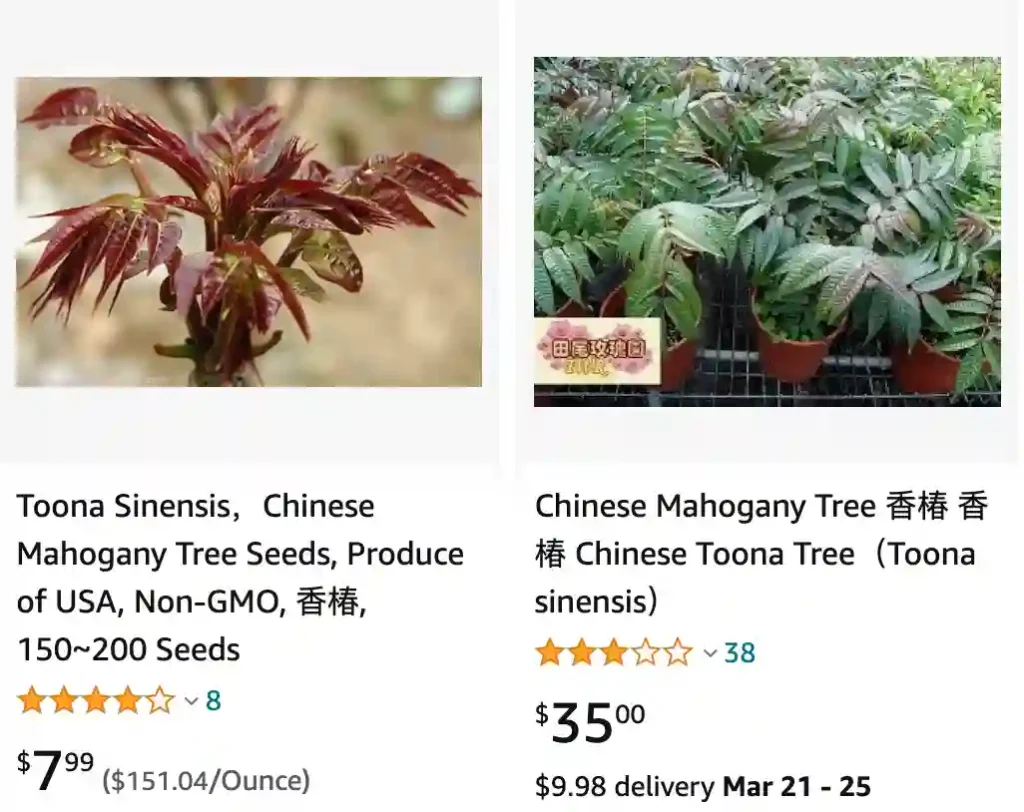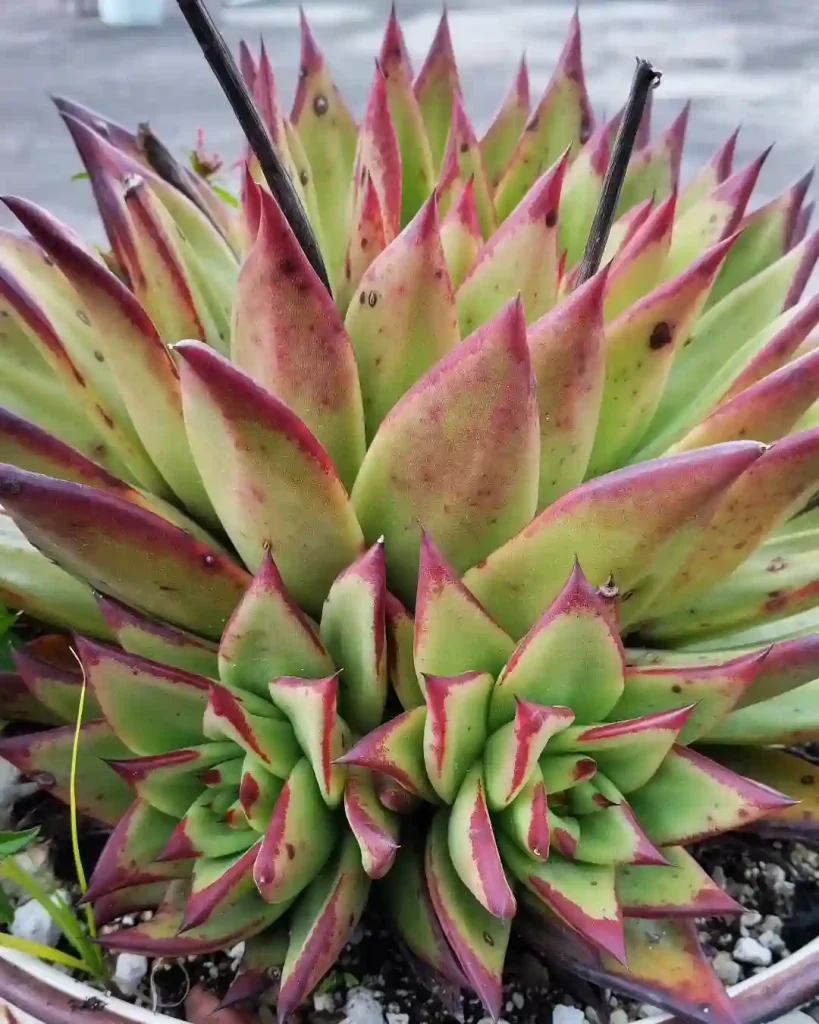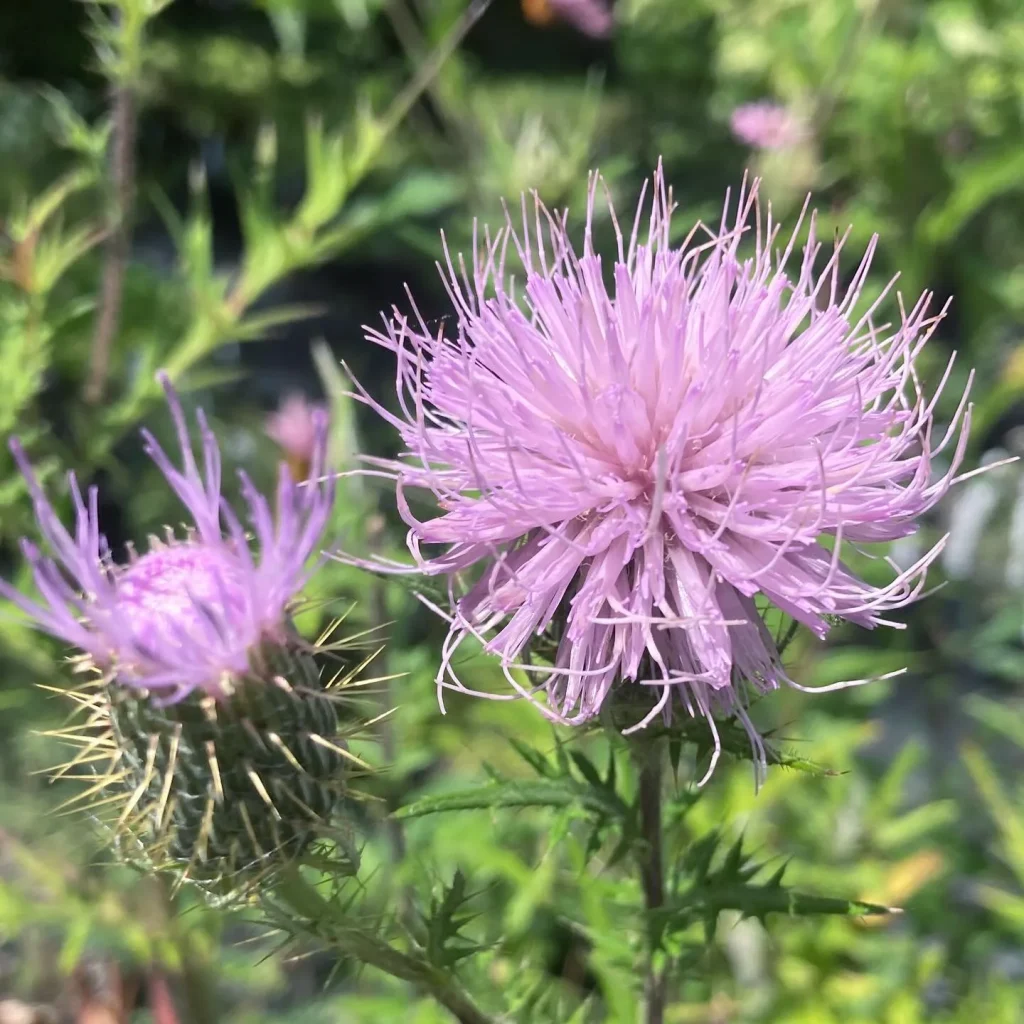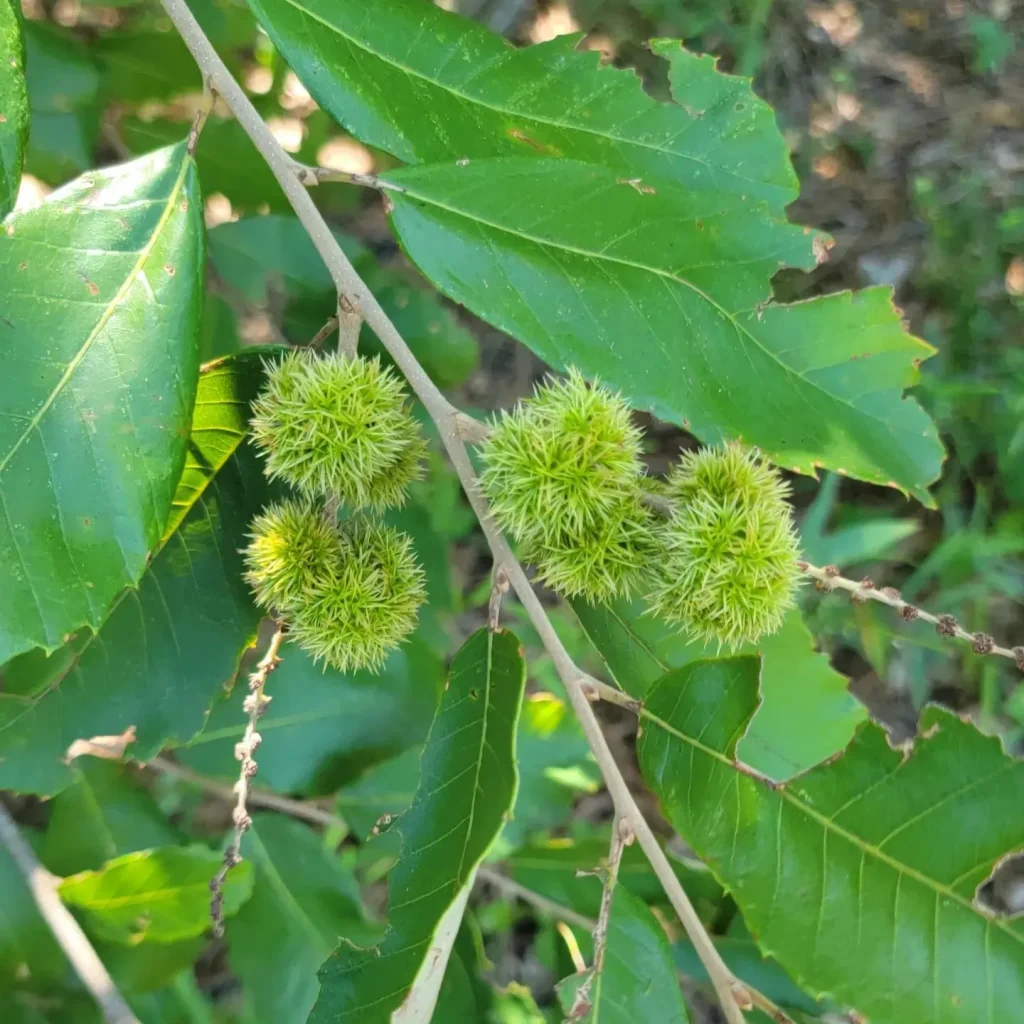
Toona Sinensis vs Tree of Heaven
In my garden, Toona Sinensis has always impressed me with its lush, aromatic foliage and rapid growth, whereas Tree of Heaven tends to spread aggressively and can be a bit of a challenge to manage.
6 Species in Genus Toona
How to grow Toona Sinensis?
Toona sinensis, commonly known as Chinese mahogany, Chinese toon, or red toon, is a deciduous tree known for its edible young shoots and attractive foliage. Here’s a comprehensive guide on how to grow Toona sinensis:
1. Location and Light:
- Full Sun to Partial Shade: Plant Toona sinensis in a location that receives full sun to partial shade. It thrives best in full sun but can tolerate some shade.
2. Soil:
- Well-Draining Soil: Toona sinensis prefers well-draining soil that is rich in organic matter. It can tolerate a range of soil types, including sandy, loamy, and clay soils, but good drainage is essential to prevent root rot.
3. Watering:
- Regular Watering: Water the tree regularly, especially during its first few years to help establish a strong root system. Once established, Toona sinensis is relatively drought-tolerant but will benefit from occasional deep watering during prolonged dry periods.
4. Planting:
- Planting Time: The best time to plant Toona sinensis is in the spring or early fall when the weather is mild.
- Hole Preparation: Dig a hole twice as wide and as deep as the root ball of the tree. Mix the removed soil with compost or well-rotted manure to enhance fertility.
- Planting the Tree: Place the tree in the hole, ensuring that the root collar (where the roots meet the trunk) is level with the soil surface. Backfill with the soil-compost mix and water thoroughly.
5. Mulching:
- Mulch Application: Apply a 2-3 inch layer of organic mulch around the base of the tree, keeping it a few inches away from the trunk. Mulch helps retain soil moisture, suppress weeds, and regulate soil temperature.
6. Fertilizing:
- Balanced Fertilizer: Fertilize Toona sinensis in the spring with a balanced, slow-release fertilizer to support healthy growth. Follow the manufacturer’s instructions for application rates.
7. Pruning:
- Minimal Pruning: Prune Toona sinensis to remove any dead, damaged, or diseased branches and to maintain its shape. Pruning is best done in late winter or early spring before new growth begins.
- Harvesting Shoots: If growing for the edible shoots, harvest the young, tender shoots in spring. Regular harvesting can encourage new shoot production.
8. Pests and Diseases:
- Monitoring: Keep an eye out for common pests such as aphids, caterpillars, and leaf miners. Treat infestations with insecticidal soap or neem oil as needed.
- Disease Prevention: Ensure good air circulation around the tree to prevent fungal diseases. Avoid overhead watering to reduce the risk of leaf diseases.
9. Winter Care:
- Cold Tolerance: Toona sinensis is hardy in USDA zones 5-9. In colder regions, protect young trees with a layer of mulch and consider using a tree wrap or shelter for additional protection during harsh winters.
10. Propagation:
- Seeds: Toona sinensis can be grown from seeds. Soak the seeds in warm water for 24 hours before sowing them in a well-draining seed starting mix. Keep the soil moist and warm until germination.
- Cuttings: Softwood cuttings can be taken in late spring or early summer. Dip the cuttings in rooting hormone and plant them in a well-draining potting mix. Keep the cuttings moist and in a humid environment until roots develop.
Where to buy Toona Sinensis tree?
I’ve been looking for a Toona Sinensis tree, and after doing some research and asking around, I found a few good places to buy one. Local nurseries often carry them, especially those that specialize in rare or exotic plants. I also found some online nurseries that offer a variety of Toona Sinensis trees. Websites like Etsy and eBay have sellers that offer young trees or seeds, and I’ve seen a few gardening specialty sites that ship them as well. One of the best options I came across was contacting a local botanical garden to see if they had any recommendations or even if they sold some themselves.
Is Toona Sinensis Flamingo edible?
Toona Sinensis Flamingo is actually edible, which is quite fascinating. The young leaves, especially when they are pink, can be harvested and used in cooking. They have a unique, onion-like flavor that makes them a great addition to salads, stir-fries, and even as a seasoning. I’ve read that in some cultures, these leaves are considered a delicacy, often used fresh or cooked. I haven’t tried them myself yet, but I’m definitely excited about the prospect of using them in my cooking once my tree starts producing those vibrant leaves.



